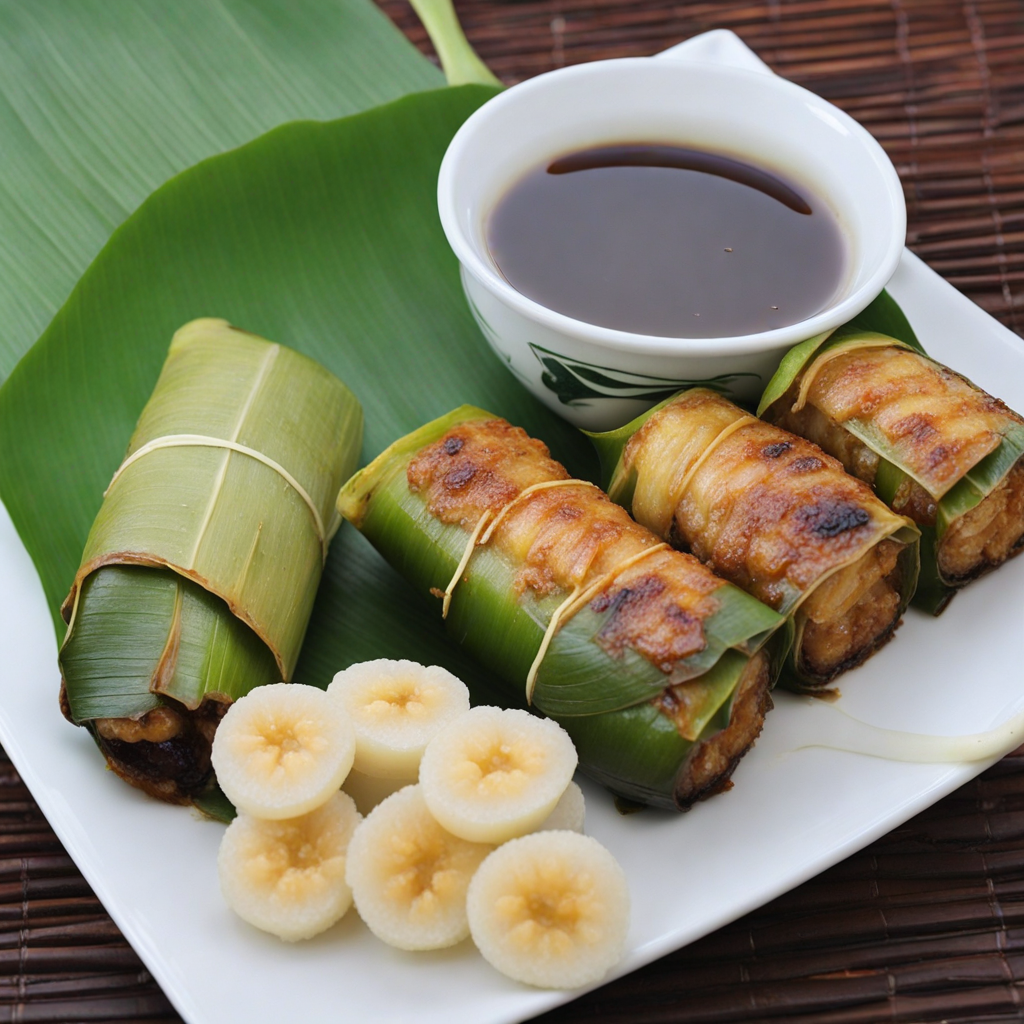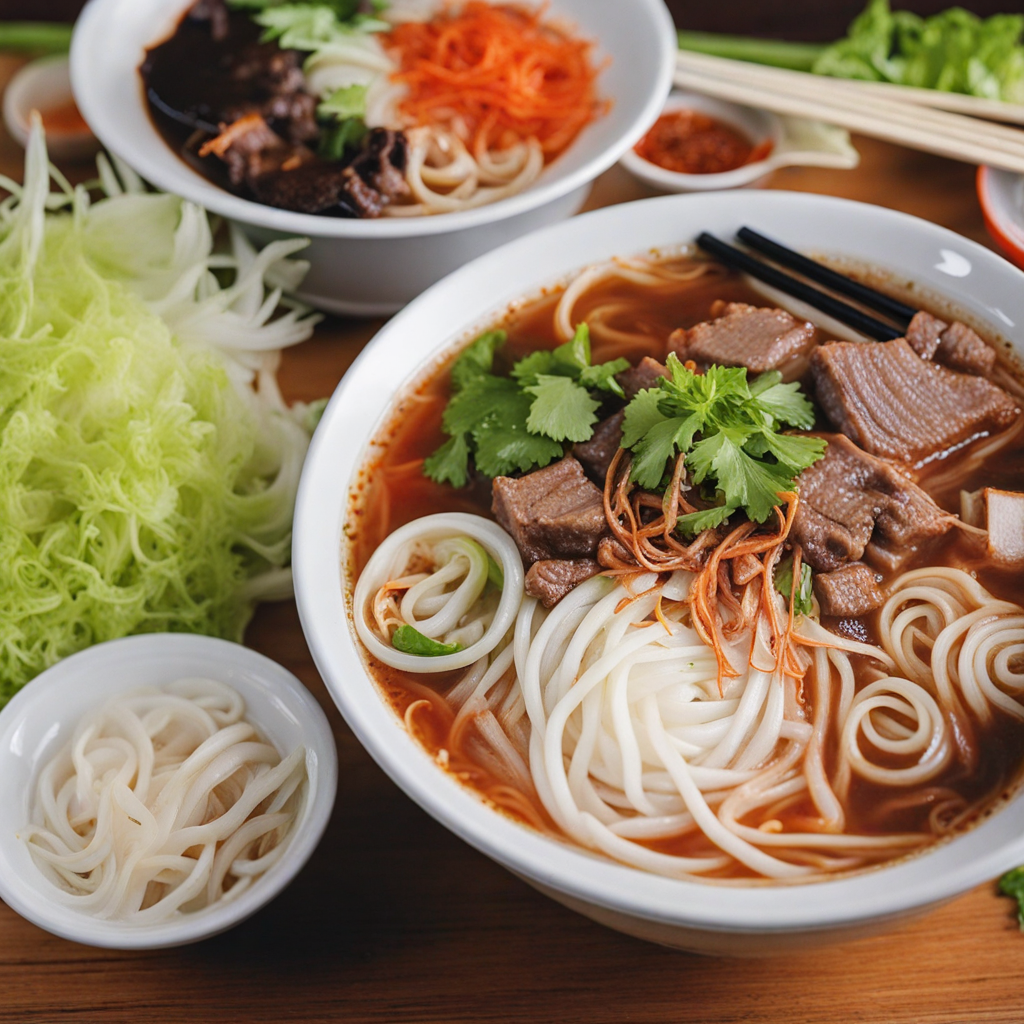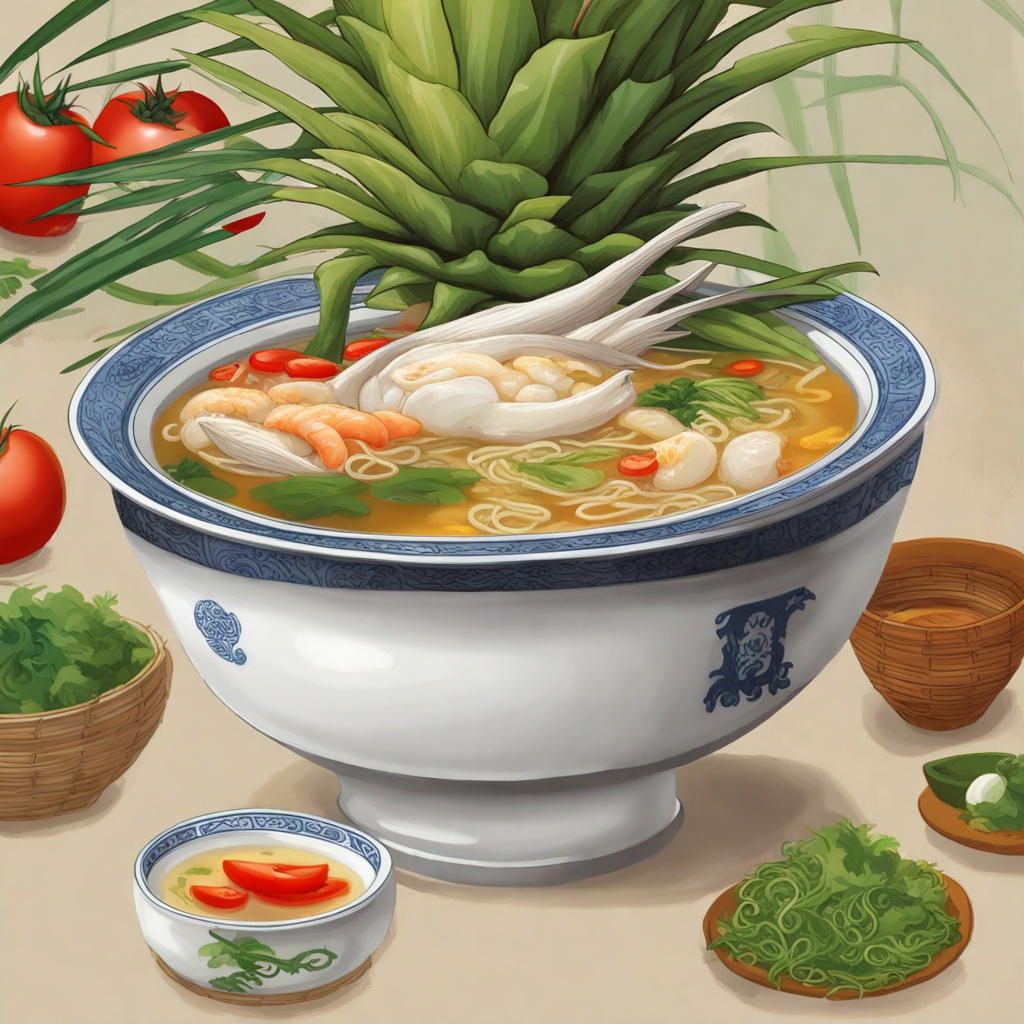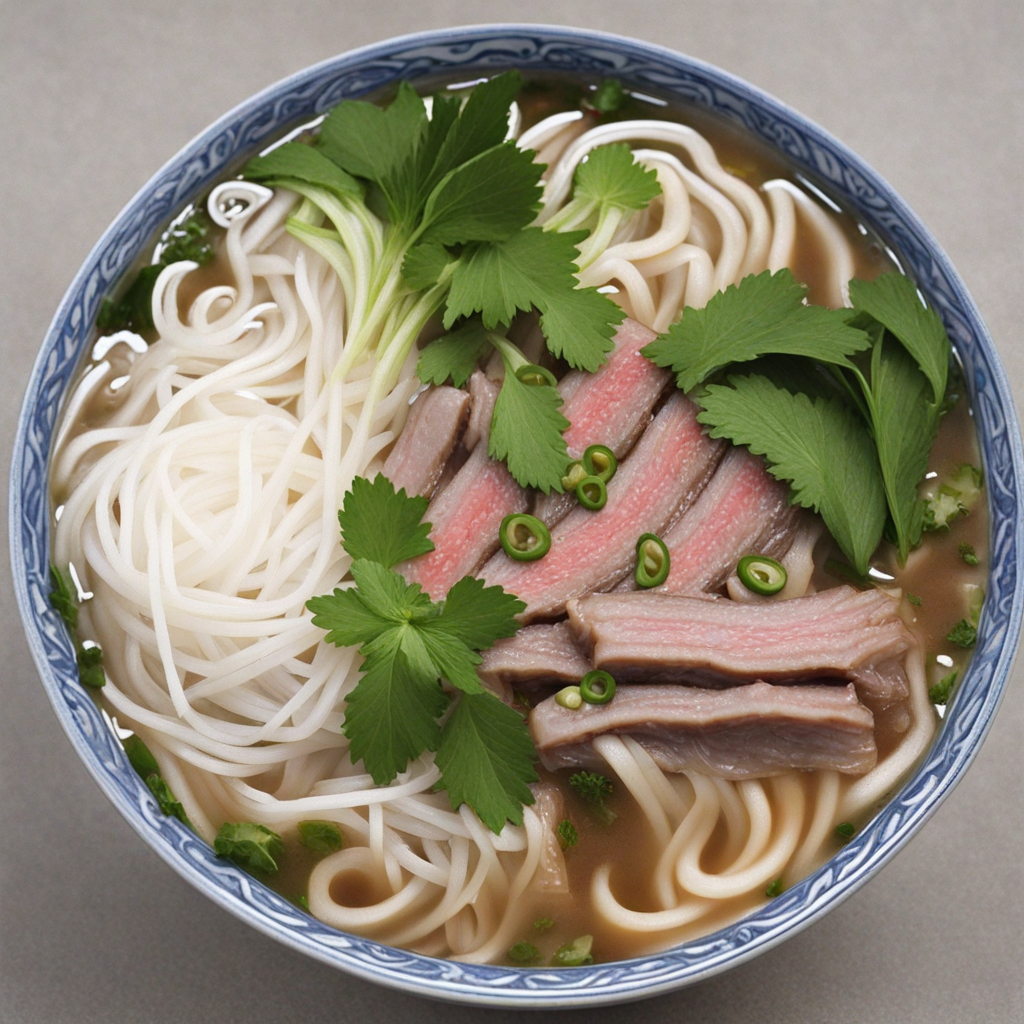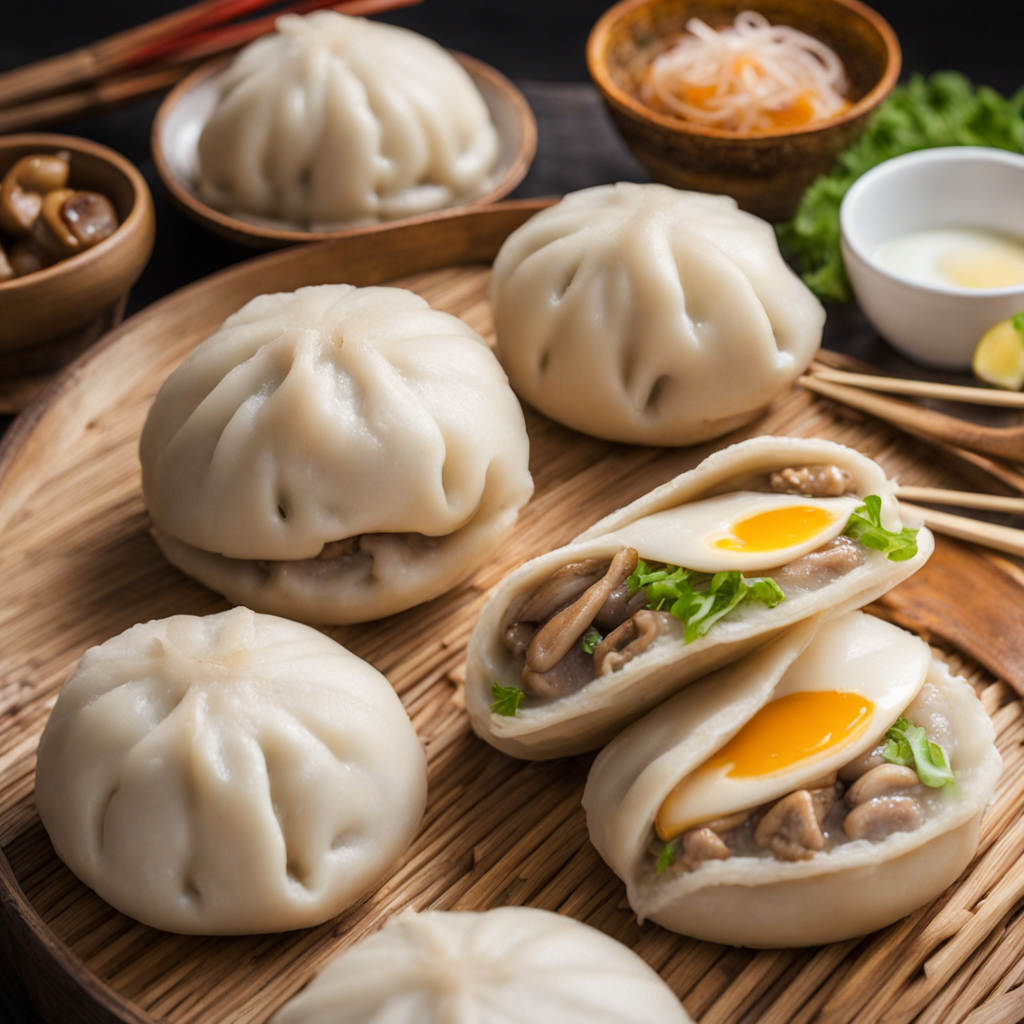Chuoi Nep Nuong
Chuoi Nep Nuong is a delightful Vietnamese dessert that showcases the unique flavors and textures of glutinous rice and ripe bananas. This dish features plump, sweet bananas, typically the small and fragrant varieties, which are enveloped in a rich layer of sticky rice. The rice is often soaked and then steamed to achieve a perfectly chewy consistency, creating a wonderful contrast with the tender fruit. The combination of the naturally sweet bananas and the slightly nutty, chewy rice makes each bite a harmonious experience, offering a taste of both simplicity and indulgence. To enhance the flavor profile, Chuoi Nep Nuong is typically drizzled with a fragrant coconut sauce that adds a creamy richness to the dish. The coconut milk is often infused with a hint of salt and sugar, resulting in a perfect balance that complements the sweetness of the bananas and the earthiness of the rice. Some variations may also include toasted sesame or peanuts sprinkled on top, adding a delightful crunch that elevates the overall texture and taste of the dish. Served warm, Chuoi Nep Nuong is not just a treat for the palate but also a comforting comfort food that evokes a sense of nostalgia for many Vietnamese people. This dessert is often enjoyed during special occasions or as a street food snack, making it a beloved part of Vietnamese culinary culture. With its unique combination of flavors, textures, and aromas, Chuoi Nep Nuong offers a delightful exploration of the sweet side of Vietnamese cuisine, inviting adventurous eaters to savor every bite.
How It Became This Dish
The History of Chuối Nếp Nướng: Vietnam’s Grilled Sticky Rice Banana Delight #### Origins and Ingredients Chuối Nếp Nướng, or grilled sticky rice banana, is a cherished traditional Vietnamese street food that alluringly blends flavors and textures. Its origins can be traced back to the diverse culinary practices of Southeast Asia, where bananas are a staple fruit, and sticky rice is a common ingredient. The dish primarily features two key ingredients: ripe bananas and glutinous rice (nếp). The banana variety most commonly used for this dish is the "chuối sáp," known for its firm texture and sweet flavor. The sticky rice is first soaked in water, then mixed with coconut milk and sugar, creating a rich and fragrant base that complements the bananas. This mixture is wrapped around the banana and then grilled over charcoal, allowing the sugars to caramelize slightly and impart a smoky flavor. The art of making Chuối Nếp Nướng reflects the resourcefulness of Vietnamese cooks who utilize locally available ingredients. The combination of bananas and sticky rice is a reflection of the agricultural bounty in Vietnam, where both crops thrive in the warm, humid climate. #### Cultural Significance Chuối Nếp Nướng is not just a delicious treat; it carries substantial cultural significance in Vietnam. Street food in Vietnamese culture serves as a social catalyst, bringing people together and fostering a sense of community. Grilled sticky rice bananas are often sold by street vendors in bustling markets and along busy streets, creating an inviting atmosphere for both locals and tourists to gather, share stories, and enjoy the culinary experience together. This dish is particularly popular during festivals and special occasions. In Vietnamese culture, the banana is often associated with fertility and prosperity. It is customary to offer bananas during religious ceremonies and family gatherings, symbolizing good fortune. As such, Chuối Nếp Nướng resonates with themes of celebration, sharing, and abundance. Moreover, the dish embodies the Vietnamese philosophy of "ăn ngon, sống khỏe" (eating well, living healthily). Made with natural ingredients, it is considered a wholesome snack that satisfies hunger while providing energy. The incorporation of coconut milk also highlights the Southeast Asian penchant for blending sweetness with savory elements, enhancing the overall culinary experience. #### Development Over Time As Vietnam underwent various historical changes and influences, so too did its culinary landscape. The French colonial period introduced new cooking techniques and ingredients, but traditional foods like Chuối Nếp Nướng remained resilient. The melding of different cultures enriched Vietnamese cuisine, enabling dishes like this to evolve while retaining their original essence. The post-war era saw a resurgence in traditional Vietnamese foods as people sought comfort in familiar tastes amidst the chaos of rebuilding. Street food vendors began to flourish again, and Chuối Nếp Nướng became a symbol of resilience and continuity in Vietnamese culinary heritage. Its preparation and consumption were often tied to nostalgia, reconnecting individuals with their roots and childhood memories. In the 21st century, the globalization of cuisine has led to a renaissance of traditional dishes worldwide, and Chuối Nếp Nướng has found its place in this movement. As Vietnamese cuisine gained international recognition, this delightful treat became more popular among food enthusiasts outside Vietnam. Restaurants and food stalls began to feature Chuối Nếp Nướng in their menus, often putting their own spins on the classic recipe. Some variations include adding toppings like sesame seeds, peanuts, or drizzling with honey or condensed milk. In addition to local adaptations, the rise of social media has played a significant role in popularizing Chuối Nếp Nướng beyond Vietnamese borders. Food bloggers and influencers have shared visually striking images of this dish, showcasing its golden, caramelized exterior and inviting interior. This exposure has contributed to a greater appreciation of Vietnamese street food culture, encouraging culinary tourism where visitors seek authentic local experiences. #### The Modern Experience Today, Chuối Nếp Nướng can be found in various settings, from busy urban streets to high-end restaurants. Many vendors pride themselves on their unique grilling techniques, often using traditional charcoal methods to impart the best flavor. The aroma of grilling rice bananas wafts through the air, drawing customers in and creating a sensory experience that is as much about the environment as it is about the food. In Vietnam, the enjoyment of Chuối Nếp Nướng often extends beyond mere consumption; it is a communal activity. Friends and families often gather at street stalls, sharing laughter and stories as they indulge in this simple yet satisfying treat. The dish’s versatility allows for it to be enjoyed at any time of day, whether as a breakfast item, an afternoon snack, or a dessert. As the world becomes increasingly health-conscious, variations of Chuối Nếp Nướng have emerged. Some vendors offer vegan or gluten-free adaptations, while others experiment with different fillings or toppings, reflecting broader culinary trends. Nonetheless, the core essence of the dish remains unchanged, connecting modern diners with the rich tapestry of Vietnamese culture and history. #### Conclusion Chuối Nếp Nướng is more than just a grilled sticky rice banana; it is a symbol of Vietnam’s rich culinary heritage, community spirit, and adaptability through the ages. From its humble origins to its place in modern cuisine, this dish encapsulates the heart of Vietnamese street food culture. As it continues to evolve and captivate palates around the globe, Chuối Nếp Nướng serves as a delicious reminder of the beauty of tradition, innovation, and the universal joy of sharing food with loved ones.
You may like
Discover local flavors from Vietnam



